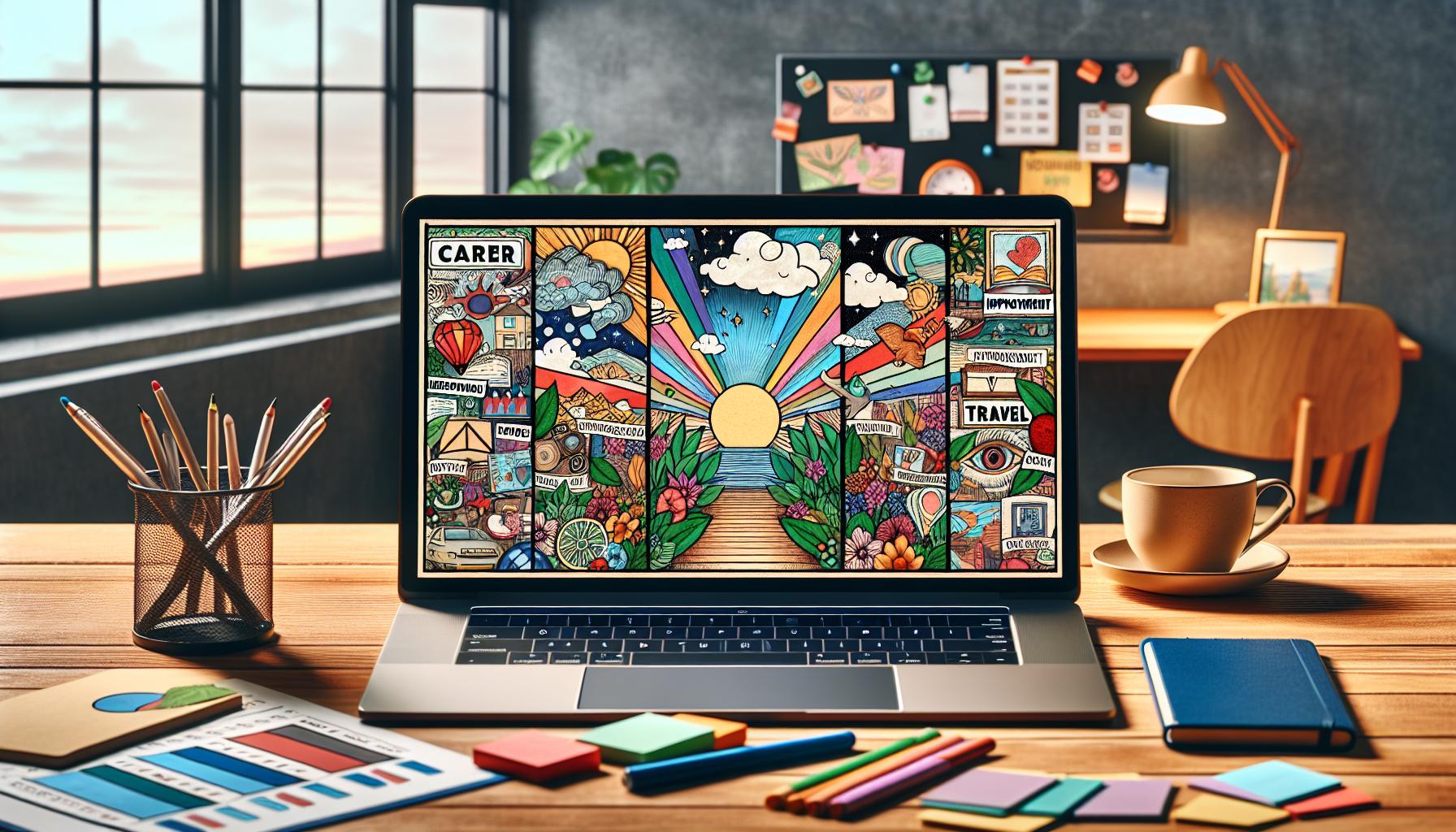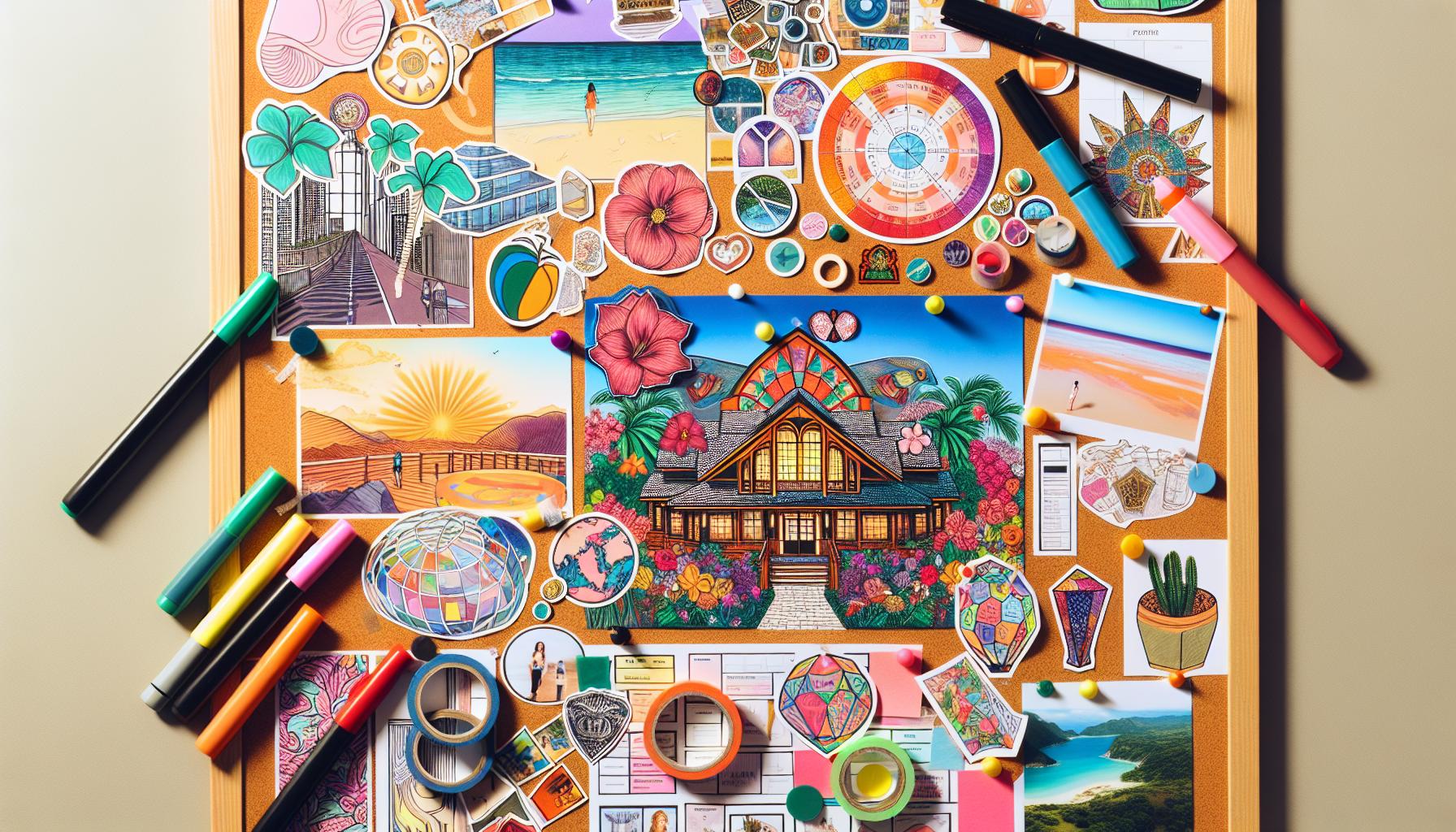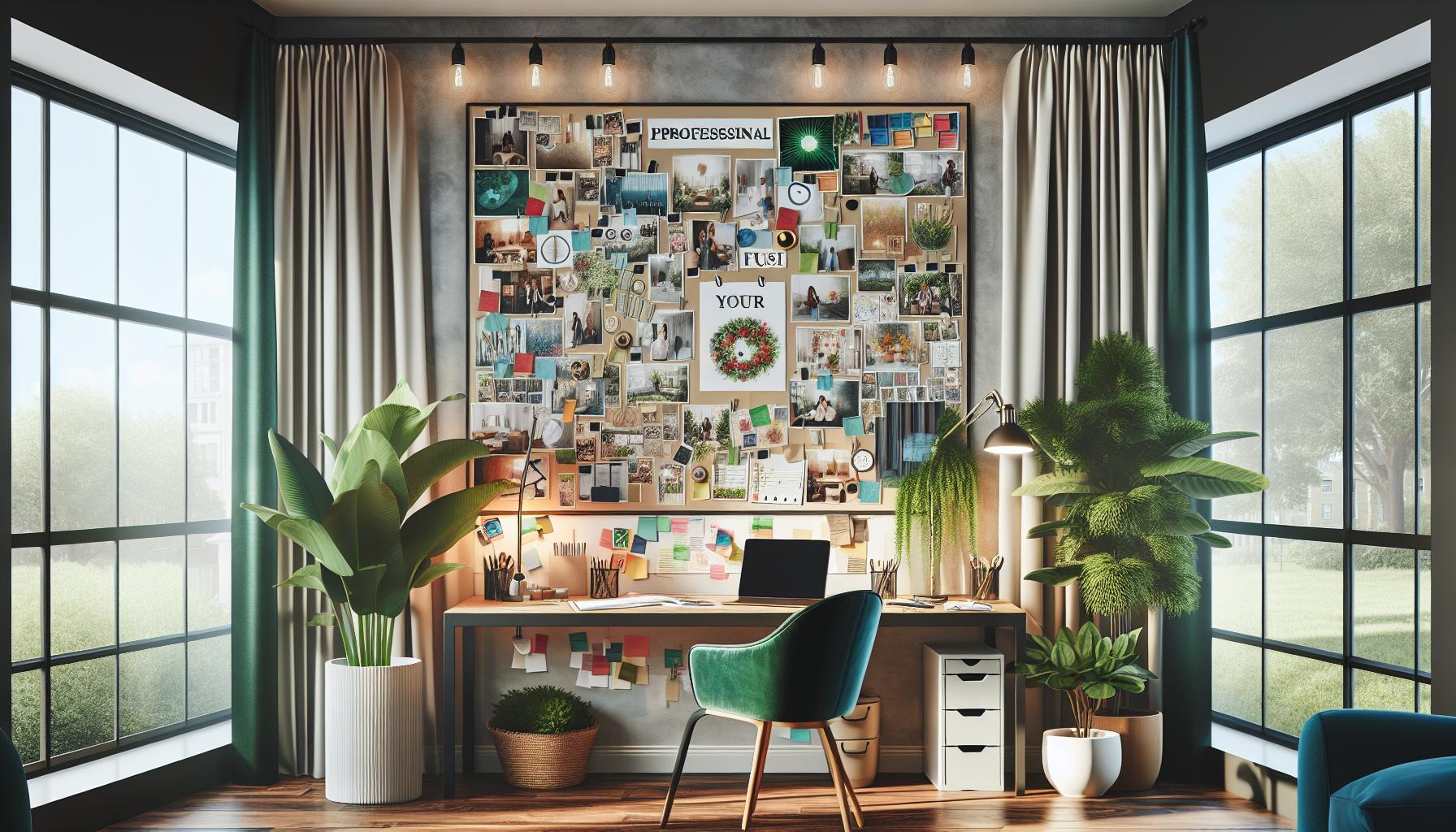A vision board is a powerful manifestation tool that transforms dreams into reality through visual representation. By combining images, photos, and words that represent specific goals, this creative display helps people stay focused on their aspirations while maintaining motivation for success.
Creating a vision board isn’t just about collecting pretty pictures – it’s a strategic process that taps into the power of visualization. Research suggests that when people can see their goals, they’re more likely to achieve them. Vision boards have gained popularity among entrepreneurs, celebrities, and personal development enthusiasts who use them to manifest everything from career advancement to personal relationships and lifestyle changes.
What Is a Vision Board and Why It Matters
A vision board transforms abstract goals into tangible visual representations through a curated collection of images, words, and symbols. It’s a physical or digital collage that captures personal aspirations, dreams, and intentions in a visually compelling format.
Core Elements
- Visual Affirmations: Pictures, magazine cutouts, or digital images representing specific goals
- Inspiring Text: Motivational quotes, power words, or personal mantras
- Meaningful Symbols: Objects, colors, or patterns that evoke desired emotions
- Goal Categories: Career milestones, relationships, personal growth or lifestyle aspirations
Strategic Purpose
Vision boards serve as powerful manifestation tools by:
- Activating the brain’s visual processing centers to reinforce goal visualization
- Creating a daily visual reminder of targeted objectives
- Maintaining focus on prioritized aspirations
- Providing clear direction for decision-making
- Converting abstract dreams into defined action steps
- Physical Boards
- Cork boards with pinned images
- Poster boards with glued elements
- Framed collages for office or home display
- Digital Formats
- Pinterest boards
- Digital vision board apps
- Desktop wallpapers
- Mobile device backgrounds
A vision board synthesizes aspirational elements into an organized visual framework that guides intentional goal achievement through consistent visualization.
Different Types of Vision Boards

Vision boards come in three distinct formats, each offering unique advantages for different visualization preferences. Each type serves the same purpose while providing specific benefits based on individual needs and lifestyle choices.
Digital Vision Boards
Digital vision boards leverage technology for goal visualization through online platforms, apps, and digital devices. These boards offer features like:
- Instant editing capabilities using design tools such as Canva, PicMonkey, or Adobe Spark
- Cloud storage access across multiple devices, including smartphones, tablets, computers
- Integration with social media platforms Pinterest and Instagram for inspiration gathering
- Digital widgets screensavers that display vision board elements throughout the day
- Shareable formats enabling collaboration with accountability partners, mentors
Physical Vision Boards
Physical vision boards create tangible manifestation tools using traditional materials displayed in physical spaces. Key components include:
- Cork bulletin boards, poster boards, or foam core bases
- Magazine cutouts, personal photos, printed images
- Handwritten affirmations, inspirational quotes
- Textural elements like fabric swatches, paint chips
- Three-dimensional objects such as trinkets and meaningful items
- Strategic placement options in bedrooms, offices, and workout spaces
- Career advancement boards highlighting professional milestones and achievements
- Wellness boards featuring fitness goals and nutrition targets
- Financial freedom boards showing wealth-building milestones
- Relationship boards depicting ideal partnerships, family connections
- Travel adventure boards showcasing destination bucket lists
- Personal development boards emphasizing spiritual growth learning goals
Key Elements of an Effective Vision Board

Vision boards integrate specific components that work together to create a powerful manifestation tool. These elements combine visual inspiration with written affirmations to represent goals across various life domains.
Images and Visual Elements
Visual elements form the foundation of a vision board through carefully selected imagery. Magazine cutouts, photographs, drawings, and symbols capture specific aspirations such as luxury cars, dream homes, fitness goals, travel destinations, and relationship milestones. Each image concretely represents desired outcomes while activating the brain’s visual processing centers for enhanced goal visualization.
Power Words and Affirmations
Power words and affirmations reinforce the visual elements through strategic text placement. Motivational quotes, single-word affirmations, success mantras, and personal statements strengthen the emotional connection to goals. Examples include “abundance,” “success,” “growth,” “prosperity,” and “love,” paired with phrases like “I am worthy” or “I attract opportunities.” These textual elements transform abstract concepts into tangible declarations.
Personal Goals and Dreams
Personal goals and dreams reflect individualized aspirations across key life categories. Career objectives, financial targets, health milestones, relationship goals, travel plans, and personal development aims to create a comprehensive vision. Each goal connects to specific images and affirmations while maintaining relevance to the individual’s values, interests, current circumstances, experience level, strengths, and weaknesses.
How to Create Your First Vision Board

Creating a compelling vision board starts with proper planning and organization. The process involves gathering essential materials and selecting meaningful content that aligns with specific goals and aspirations.
Gathering Your Materials
A successful vision board requires these essential materials:
- Sturdy base: Cork board, poster board, or foam board (20×30 inches)
- Adhesives: Glue sticks, double-sided tape, or push pins
- Scissors: Sharp pair for precise cutting
- Markers: Colorful permanent markers or paint pens
- Magazines: Various publications aligned with goals (fitness, business, travel)
- Printer: For printing digital images or quotes
- Decorative elements: Washi tape, stickers, or ribbons
- Storage container: Box or folder to collect materials
Selecting Meaningful Content
The content selection process focuses on these critical elements:
- Images: Photos representing specific goals (dream house, fitness milestones, travel destinations)
- Words: Powerful phrases or affirmations that resonate with objectives
- Symbols: Visual representations of abstract concepts (peace symbol, heart, arrow)
- Categories: Clear sections for different life areas
- Career achievements
- Personal relationships
- Health goals
- Financial targets
- Travel aspirations
- Personal development
- Current goals
- Future aspirations
- Personal values
- Timeline specificity
- Emotional connection
Best Practices for Vision Board Success

Vision board success relies on consistent engagement and strategic implementation of proven techniques. These practices maximize the board’s effectiveness as a manifestation tool.
Regular Review and Updates
Daily interaction with a vision board amplifies its manifestation power through consistent visualization. Setting specific review times, such as morning routines or evening reflection periods, creates a structured approach to goal visualization. Monthly updates refresh the board’s content by:
- Removing achieved goals
- Adding new aspirations
- Adjusting timelines for existing goals
- Incorporating seasonal objectives
- Updating images to match current preferences
Strategic Board Placement
The location of a vision board directly impacts its effectiveness as a daily reminder. Optimal placement includes:
- Home office desk for career-focused boards
- Bedroom wall for personal development goals
- Kitchen area for health-related objectives
- Living room for family-oriented aspirations
- Digital wallpaper for mobile devices
- Workspace screensaver for professional targets
Each placement creates multiple daily viewing opportunities, reinforcing the connection between visual representation and goal achievement. The visibility factor increases mindful interaction with the goals, turning casual glances into purposeful visualization moments.
The Science Behind Vision Boards
Neurological Impact
Vision boards leverage the brain’s neural pathways through visual stimulation. The visual cortex processes images 60,000 times faster than text, creating stronger neural connections for goal retention. When individuals view their vision boards regularly, the reticular activating system (RAS) filters information that is aligned with their goals.
Psychological Benefits
Vision boards activate three vital psychological mechanisms:
- Selective attention focuses mental resources on goal-relevant opportunities
- Neural reinforcement strengthens goal-related neural pathways through repetitive viewing
- Emotional engagement creates dopamine responses linked to goal visualization
Research Evidence
| Study Component | Key Finding | Impact |
|---|---|---|
| Visual Processing | The brain processes images in 13 milliseconds | Faster goal internalization |
| Goal Achievement | Regular visualization increases success by 42% | Higher completion rates |
| Memory Retention | Visual information retention rate of 65% | Enhanced goal recall |
Motivational Effects
Vision boards enhance motivation through:
- Priming the subconscious mind for goal recognition
- Creating positive emotional associations with targets
- Establishing explicit mental models of desired outcomes
- Activating reward centers during visualization sessions
Behavioral Changes
Regular interaction with vision boards triggers measurable behavioral shifts:
- Increased goal-oriented decision-making
- Enhanced pattern recognition for opportunities
- Improved focus on priority objectives
- Accelerated progress through consistent visual reminders
Final Thoughts
Vision boards are powerful manifestation tools that bridge the gap between dreams and reality. Combining strategic visualization with practical goal-setting elements creates a dynamic framework for personal and professional growth. Whether digital, physical, or hybrid, these visual representations harness psychological principles and neuroscience to enhance goal achievement.
The key to success is consistent engagement, regular updates, and mindful placement. As research continues to validate their effectiveness, vision boards remain essential for anyone committed to transforming their aspirations into tangible results.



